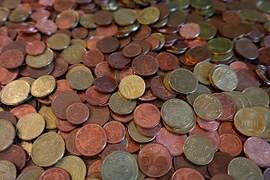 Copper is considered by many as an asset that reflects the state of global economic health because it is employed in commercial construction and home building and in many other aspects of production. Some even consider that copper does have the ability (though to a limited extent) to predict turning points in the global economy, so taking a look at this market's behavior may be rewarding, as well as educational.
Copper is considered by many as an asset that reflects the state of global economic health because it is employed in commercial construction and home building and in many other aspects of production. Some even consider that copper does have the ability (though to a limited extent) to predict turning points in the global economy, so taking a look at this market's behavior may be rewarding, as well as educational.
Copper markets have been experiencing a losing streak since mid-January. From January 15 to February 3 copper futures lost around 13.5 percent of their market value. Nevertheless, since last Tuesday, the markets have picked up, ending up in the positive territory at the end of Thursday's session and gaining around 3.5 percent during the winning streak.
Copper prices, just as the prices of any base metal, are highly sensitive to the economic situation in China, which is among the world's largest producers and consumers of such commodities. Just for copper, the Asian country counts for about half of the global demand.
The coronavirus outbreak undoubtedly stoked the fears in the global markets since it's expected to affect the Chinese economic activity in a significant way, as panic associated with the epidemic is already affecting the Chinese services sector. The economy as a whole is expected to contract this year, as S&P Global Ratings recently reported that they foresee a fall in Chinese economic growth from 5.7 to 5 percent, while Goldman Sachs revised down its growth expectations from 5.6 percent to 4 percent.
Analysts claim that the final effect of the outbreak will mostly depend on the Chinese government's capacity to contain it and on how the return to work after the extended new year holidays, which is expected to happen on Monday, will be managed. Many Chinese workers are currently hesitant to come back to their workplaces, fearing that the local factories won't implement enough safety measures, so it's still not clear how this situation will play out.
Last week the copper markets felt somewhat relieved since the number of reported new infections worldwide seemed to be dwindling. Markets were also expecting that recently implemented stimulus measures by the Chinese government would drive up this metal's price. The optimism was such that many were claiming that the peak in the spread of the virus was already reached, a claim that the World Health Organization debunked on Thursday.
“It’s right now too early to make predictions on numbers,” said the executive director of the World Health Organization's Health Emergencies Program during a press conference in Geneva.
Concerns regarding supply disruptions also helped to drive the prices higher, as the Chinese authorities decided to impose transport restrictions with the purpose of helping to contain the epidemic. Analysts also expect some copper melters to cut their production levels if the situation doesn't improve, for example, the Chinese research house Antaike expects Chinese copper output to fall by more than 15 percent on February (month-to-month), after falling 9.9 percent on January according to data provided by Shanghai Metals Market (SMM).
On Friday's session, the copper futures markets reacted negatively, losing around 1.54 percent and breaking last week's gaining streak. Negative data released by the National Health Commission may be behind this recent wave of panic, the death toll surpassed that of the SARS outbreak over the weekend, and the death toll is expected to keep rising as more cases are being reported daily.
